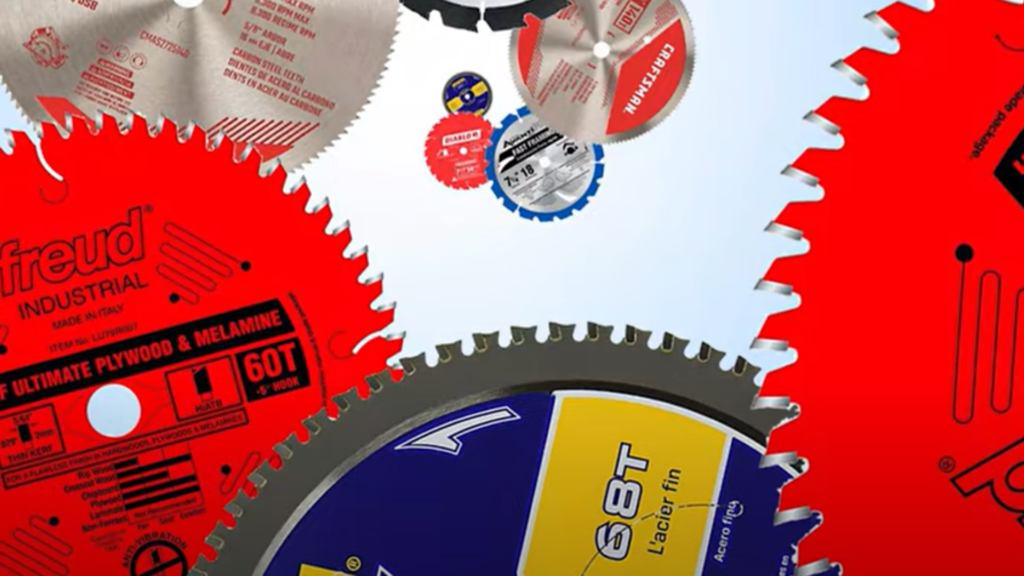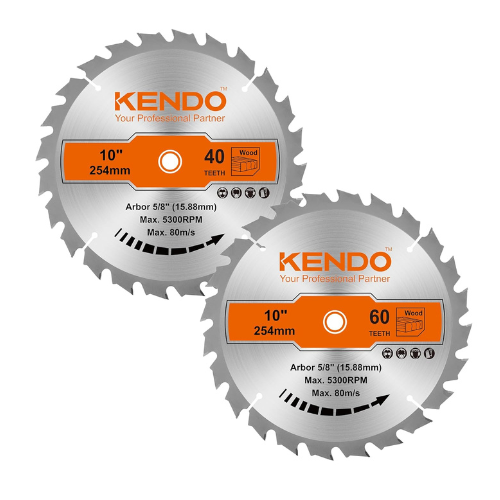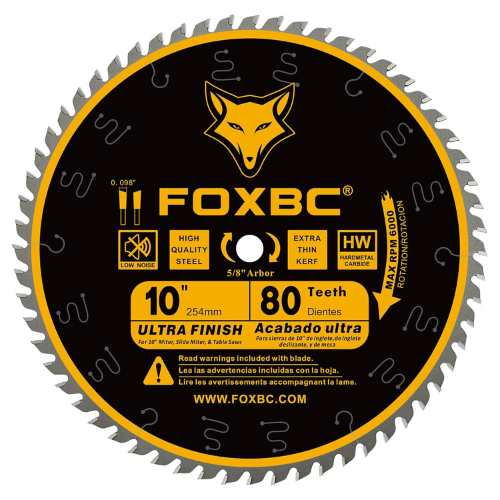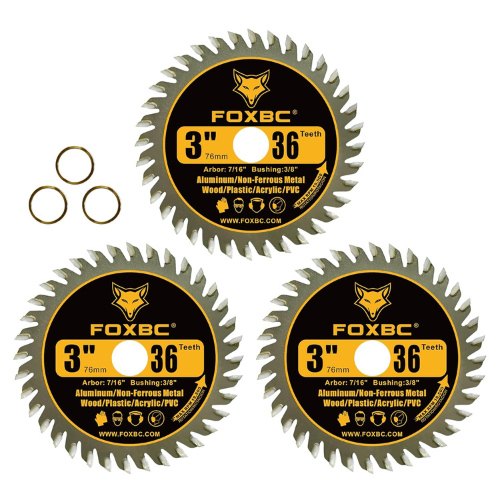As a construction expert, I’ve spent years working with saws and blades, so I know how frustrating it can be when your saw isn’t cutting the way you need it to. I’ve been there—dealing with uneven cuts, overheating, and wasted time. But trust me, having the right circular saw blade can change everything. The key is finding the blade that works best for your project, whether you’re cutting plywood, hardwood, or softwood.
With so many brands and blades to choose from, it can get confusing. Over the years, I’ve figured out which ones are truly worth your time. In this guide, I’ll share the top 10 circular saw blade brands I trust. You’ll learn which blades are the best for different tasks and how to make clean, smooth cuts every time.
Let’s jump in and find the perfect saw blade for your next project!
Why Choosing the Right Circular Saw Blade Matters

According to my experience, I can tell you right away that picking the right circular saw blade is pivotal. It can mean the difference between a smooth, efficient job and a frustrating one. Here’s why choosing the best circular saw blade for wood matters:
- Precision: A quality blade cuts clean and smooth, which is essential when working on fine woodworking or cutting plywood and hardwood. I’ve seen how the right blade can turn a rough cut into a perfect one, saving time and effort.
- Durability: Over the years, I’ve learned that the best blades stay sharp longer and hold up against wear and tear. With a good blade, you don’t have to worry about replacing it frequently, which helps save both money and time.
- Efficiency: When I’m working on a job, I need tools that perform well without slowing me down. The right blade makes cutting faster and more efficient. I’ve had blades that helped me zip through tasks, while others left me bogged down.
- Safety: One thing I can’t stress enough is how much safer a sharp, well-maintained blade is. I’ve avoided plenty of accidents just by using a good-quality blade that cuts smoothly, reducing the risk of kickback and other safety issues.
- Versatility: Over the years, I’ve worked with all sorts of materials, from pressure-treated wood to plywood and even wood with nails. The right blade makes all the difference, ensuring I get clean cuts no matter what I’m working with.
7 Best Circular Saw Blades for Cutting Wood
1. FOXBC 6-1/2 Inch Circular Saw Blade 40T & 60T Combo Pack

This FOXBC 6-1/2 Inch Circular Saw Blade is a reliable choice for wood cutting. With 40-tooth and 60-tooth options, this combo pack delivers smooth crosscuts, fine finishes, and fast framing cuts. It’s perfect for use with corded and cordless circular saws.
Key Features
- Material and Build
- Made with high-density tungsten carbide for durability.
- Ultra-thin kerf design for faster, effortless cuts.
- Laser-cut stabilizer vents reduce noise, vibration, and blade warp.
- Performance Highlights
- Produces clean and precise cuts on various types of wood.
- Reduced vibration ensures smoother operation.
- Long-lasting cutting life due to strong impact resistance.
- Suitable Applications
- Ideal for cutting softwood, hardwood, plywood, MDF, OSB, and laminated wood.
- Compatible with popular saw models like Milwaukee, DeWalt, and Ryobi.
Pros:
- Delivers smooth and accurate cuts.
- Durable and long-lasting blade life.
- Lightweight and easy to handle.
- Compatible with multiple saw brands.
Cons:
- May not be suitable for heavy-duty metal cutting.
- Requires proper storage to avoid damage to the thin kerf.
This blade is perfect for professionals and DIY enthusiasts looking for a versatile, high-performance saw blade. It’s a great option for those working on woodworking projects, furniture making, or home renovations.
2. Echo Corner 6-1/2″ Wood Cutting Circular Saw Blade 60T

The Echo Corner 6-1/2″ Wood Cutting Circular Saw Blade is designed for fine-finish rip and crosscuts. With 60 tungsten carbide-tipped teeth, this blade delivers smooth and precise cuts on wood, plywood, MDF, plastic, veneer, and more. It’s a reliable choice for professional and industrial applications.
Key Features
- Material and Build
- Constructed with industrial-grade C3 tungsten carbide teeth for durability and longevity.
- Alloy steel body ensures stability during high-speed cuts.
- Laser-cut stabilizer vents reduce noise, vibration, and blade warp.
- Performance Highlights
- Clean, precise cuts with minimal splintering.
- Ultra-thin kerf design (1.6 mm) for faster, smoother cutting.
- High-speed capability with a maximum RPM of 8,500.
- Suitable Applications
- Perfect for cutting engineered wood, plywood, MDF, plastic, veneer, laminate, and lumber.
- Compatible with saws featuring a 5/8″ arbor or diamond arbor for worm drive saws.
Pros:
- Produces clean and professional-grade cuts.
- Durable construction extends blade life.
- Reduced noise and vibration for a smoother experience.
- Lightweight and versatile for various materials.
Cons:
- Not suitable for heavy-duty metal cutting.
- Requires proper care to maintain precision over time.
This blade is perfect for woodworkers, contractors, and DIY enthusiasts who need a reliable, high-performance blade for detailed and fine-finish cuts. It’s especially ideal for those working with engineered wood, veneer, and laminate.
3. KENDO 10 Inch 40T & 60T Carbide-Tipped Circular Saw Blade

The KENDO 10 Inch 40T & 60T Saw Blade is ideal for clean, precise cuts in wood and engineered materials. This 2-pack includes both 40-tooth and 60-tooth blades, making it perfect for cross cutting hardwood, softwood, plywood, MDF, and more.
Key Features
- Material and Build
- Tungsten carbide-tipped teeth for durability and heat resistance.
- Tough construction resists bending for a long-lasting cutting life.
- Inlay teeth brazing technology enhances nail impact resistance.
- Performance Highlights
- ATB (Alternating Top Bevel) tooth design provides smoother, splinter-free cuts.
- Maintains accuracy at a maximum speed of 5,300 RPM.
- Efficient chip and swarf removal for faster cuts.
- Suitable Applications
- Designed for softwood, hardwood, plywood, MDF, chipboard, and panels.
- Ideal for framing, cross-cutting, and finishing tasks.
Pros:
- Durable and wear-resistant materials.
- Smooth, clean cuts with reduced splintering.
- Includes two blades for versatile cutting options.
- Maintains stability at high speeds.
Cons:
- Limited to wood and engineered materials (not suitable for metal).
- May require proper storage to preserve the sharpness of teeth.
This blade is perfect for professionals and serious DIYers who need clean, precise cuts for various wood projects. Whether you’re building furniture, framing, or working on detailed woodwork, this blade delivers reliable performance.
4. FOXBC 10-Inch Table Saw Blade, 80-Tooth

This FOXBC 10-Inch 80-Tooth Table Saw Blade is ideal for making ultra-smooth, precise cuts in wood. It’s designed for miter saws, table saws, and other 10-inch saws, delivering professional-grade results. With high-quality tungsten carbide construction, this blade offers long-lasting performance for woodworking projects.
Key Features
- Material and Build
- High-density tungsten carbide teeth for durability and wear resistance.
- Thin kerf design reduces material waste and ensures fast, smooth cuts.
- Anti-vibration plate reduces noise and provides stability during use.
- Performance Highlights
- Ultra-fine 80-tooth design for clean, splinter-free finishes.
- ATB (Alternating Top Bevel) grind ensures smooth crosscuts.
- Compatible with popular saw brands like DeWalt, Skil, Metabo, and Makita.
- Suitable Applications
- Ideal for crosscutting materials like oak, pine, melamine, plywood, and molding.
- Perfect for precision work on miter and table saws.
Pros:
- Delivers clean and accurate cuts.
- Durable and built for long-term use.
- Reduces vibration for smoother operation.
- Lightweight and easy to handle.
Cons:
- Not suitable for ripping large, dense materials.
- May require frequent cleaning to maintain peak performance.
This blade is perfect for woodworkers, carpenters, and DIY enthusiasts who need clean and detailed cuts. It’s especially suitable for furniture making, molding, and other fine woodworking projects.
5. OA-BRES 4-1/2-Inch 40T Circular Saw Blade

The OA-BRES 4-1/2-Inch 40T Circular Saw Blade is ideal for smooth and efficient wood cutting. Made with durable alloy steel and tungsten carbide-tipped teeth, it ensures accurate and fast cuts. This 3-pack set is perfect for general-purpose woodworking and can handle a variety of materials like wood, plastic, and composites.
Key Features
- Material and Build
- Constructed from premium alloy steel for durability.
- Tungsten carbide-tipped teeth are hardened for sharper, longer-lasting performance.
- Polished and chrome-plated surface enhances longevity.
- Performance Highlights
- Thin kerf design allows for smooth, fast, and precise cuts.
- Maximum RPM of 13,500 ensures high-speed cutting efficiency.
- Compatible with multiple tools, including circular saws, miter saws, and table saws.
- Suitable Applications
- Designed for cutting hardwood, softwood, plastic, and composite materials.
- Perfect for ripping, crosscutting, and general-purpose woodworking tasks.
Pros:
- Durable and long-lasting construction.
- Delivers smooth and accurate cuts with minimal resistance.
- Versatile and compatible with various saw types.
- Comes in a convenient 3-pack for added value.
Cons:
- Limited to smaller diameter tools (4.5 inches).
- Not suitable for heavy-duty metal cutting tasks.
This blade is perfect for DIY enthusiasts, hobbyists, and professionals who need a compact yet powerful saw blade for woodworking projects. It’s an excellent choice for smaller, precise cutting jobs on wood, plastic, and composite materials.
6. DEWALT Circular Saw Blade, 7-1/4 Inch, 40 Tooth

This DEWALT 7-1/4 Inch 40-Tooth Circular Saw Blade is ideal for precise, smooth wood cutting. Designed for both corded and cordless saws, it combines toughness, durability, and efficient performance. Its high-density tungsten carbide teeth ensure long-lasting sharpness, while the thin kerf design minimizes waste and enhances cutting speed.
Key Features
- Material and Build
- Constructed with high-density tungsten carbide for toughness and extended life.
- Tough coat anti-stick coating minimizes friction and prevents gumming.
- Reinforced shoulder adds impact resistance, even for nail-embedded wood.
- Performance Highlights
- Thin kerf ensures smooth and fast cuts with less material waste.
- Suitable for use with corded and cordless circular saws for added versatility.
- Reliable performance on tough wood-cutting tasks.
- Suitable Applications
- Perfect for cutting softwood, hardwood, and nail-embedded wood.
- Ideal for construction projects, framing, and general-purpose wood cutting.
Pros:
- Durable and long-lasting tungsten carbide construction.
- Anti-stick coating reduces friction and improves cutting efficiency.
- Thin kerf design enhances cutting speed and precision.
- Compatible with a variety of circular saws.
Cons:
- Limited to wood and wood-like materials.
- Slightly pricier than standard blades, reflecting its premium quality.
This blade is perfect for contractors, woodworkers, and DIY enthusiasts who need a reliable, durable blade for wood cutting. It’s a great choice for those working on framing, construction, or woodworking projects where precision and toughness are essential.
7. FOXBC 3-Inch Carbide Circular Saw Blade, 36 Tooth

This FOXBC 3-Inch Carbide Circular Saw Blade is ideal for cutting wood, plastic, PVC, acrylic, and even aluminum. With 36 carbide-tipped teeth and a thin kerf design, this blade offers fast, clean cuts with minimal resistance. Its durable construction and compatibility with a variety of compact saws make it a versatile and reliable choice for detailed woodworking and finishing tasks.
Key Features
- Material and Build
- Made from high-density tungsten carbide for toughness and wear resistance.
- Ultra-thin kerf design reduces cutting effort and enhances precision.
- Performance Highlights
- Delivers clean, fast cuts with minimal waste.
- Durable teeth maintain sharpness even after extended use.
- Lightweight and easy to control for smooth, accurate results.
- Suitable Applications
- Ideal for cutting wood, plastic, PVC, acrylic, aluminum, and composite materials.
- Suitable for rough framing, finish lumber, plywood, OSB, and siding projects.
- Compatible with compact saws like Dremel Saw-Max, Ridgid, Ryobi, and more.
Pros:
- Versatile cutting for multiple materials.
- Thin kerf design ensures smooth, precise cuts.
- Lightweight and easy to handle.
- Compatible with a wide range of compact saws.
Cons:
- Limited to smaller, detailed cutting tasks.
- Not suitable for heavy-duty cutting projects.
How to Cut Wood with a Circular Saw Blade (Step-by-Step Guide)
Having worked on countless projects over the years, I can tell you that cutting wood with a circular saw doesn’t have to be complicated. With the right preparation and technique, you can make clean, accurate cuts every time. Here’s how I’ve learned to do it over the years:
- Choose the Right Blade – The first step is picking the right circular saw blade
- How to Cut Wood with a Circular Saw Blade (Step-by-Step Gu for the type of wood you’re cutting. Whether it’s plywood, hardwood, or pressure-treated wood, the right blade makes a huge difference. I’ve learned that using the wrong blade often leads to rough cuts or damaged material.
- Set Up the Saw – Before you start, make sure the blade is securely installed on your circular saw. Double-check that it’s tightly fastened so you don’t run into any surprises when the saw is running.
- Measure and Mark – I always make sure to measure and clearly mark my cut lines with a pencil or chalk. Taking a few extra minutes to mark it properly saves me a lot of time and frustration later.
- Prepare the Wood – Place the wood on a stable surface, like a workbench or sawhorses. I’ve learned that if the wood isn’t secured, it can shift during the cut, leading to uneven results. If needed, use clamps to hold it in place.
- Position the Saw – Line up the saw blade with the marked cut line. I always make sure to keep my hands well away from the blade and maintain a firm grip on the saw.
- Start the Saw – Turn on the saw and let the blade reach full speed before cutting. I find it’s best to let the blade do the work instead of forcing it through the material. Keeping a steady pace ensures a cleaner cut.
- Complete the Cut – Once you’ve finished cutting, turn off the saw and wait for the blade to stop spinning before you set it down. This is one of the most important safety steps I always follow.
By following these simple steps, you’ll get the clean, precise cuts you need for your woodworking projects. Over the years, I’ve found that taking the time to prepare and follow each step carefully makes all the difference.
Important Features to Look for in a Circular Saw Blade
From years on the job site, I’ve learned that choosing the best circular saw blade can make or break your project. Here are key features to keep in mind:
- Blade Size – Circular saw blades come in various sizes. The most common ones I’ve used are 7-1/4 inches, 10 inches, and 6-1/2 inches. Always pick the size that matches your saw and the materials you’re cutting.
- Teeth Count – If you want smooth, clean cuts, go for a blade with 60-80 teeth. For quicker, rougher cuts, I recommend a blade with 24-40 teeth.
- Tooth Type – Carbide-tipped teeth are my go-to choice. They last longer and stay sharper, which is critical when cutting wood on tight deadlines.
- Kerf Width – A thin kerf blade makes cutting easier because it reduces resistance. However, I’ve found thicker blades to be more reliable when handling tougher, heavy-duty tasks.
- Blade Material – Quality matters. I prefer blades made from high-grade steel or carbide. They’ve always given me better results and lasted longer.
Maintenance Tips for Cutting Wood
After working with circular saws for so long, I know that a well-maintained blade is key to getting clean, accurate cuts. Here are some tips I follow to keep my blades in top condition:
- Clean the Blade Regularly – Every time I finish a job, I take a moment to wipe off sawdust and resin from the blade. It prevents buildup and keeps the blade sharp.
- Sharpen the Blade – When I notice uneven cuts or the saw feels like it’s working harder than usual, I know it’s time to sharpen the blade. A sharp blade makes cutting smoother and protects your saw from strain.
- Check for Damage – Before starting a project, I always inspect my blade. Cracks, chips, or bent teeth can ruin your cuts and even damage your saw. If I find any issues, I replace the blade right away.
- Lubricate the Saw – Oiling the saw’s moving parts regularly helps it run smoothly. This decreases wear and tear, extending the life of your tool.
- Store the Blade Properly – I’ve learned the hard way that blades left in humid places can rust quickly. I always store mine in a cool, dry spot to avoid damage.
These small habits have saved me time and money over the years and made my work much easier.
Frequently Asked Questions
- What’s the difference between a 7-1/4 inch and a 10-inch circular saw blade?
The 10-inch blade is larger, meaning it can cut deeper into thicker wood. The 7-1/4-inch blade is better for lighter cuts and is more common in portable saws.
- Can I use a circular saw blade for cutting wood with nails?
Yes! Some blades, like the Bosch T101B, are specifically designed for cutting through wood with nails. Always check the blade’s specifications.
- How often should I sharpen my circular saw blade?
Sharpen your blade when it starts to show signs of dullness, such as slower cuts or jagged edges. If you’re cutting a lot of tough materials, sharpening every few months may be necessary.
- Can I use a circular saw blade for metal cutting?
Some blades are designed for both metal and wood, but make sure the blade is rated for metal. Using a wood-only blade on metal can damage both the blade and the saw.
- What is a kerf, and why does it matter?
The kerf is the width of the cut that the blade makes. A thinner kerf means less material is removed during the cut, making it easier to cut through wood with less effort.
Conclusion
Over the years, I’ve relied on these brands because they consistently deliver durable, precise, and high-performing blades. They’ve helped me tackle everything from framing large structures to detailed finish work, and I’ve seen DIYers trust them for their home projects too.
Nominating the best circular saw blade for wood comes down to your needs and the type of work you’re doing. I encourage you to test out a few brands and find the one that feels right for your projects.
If you found this post helpful, check out other topics on my blog for more practical advice. Also, let me know your go-to circular saw blade brands in the comments—I’d love to hear about your experiences!

